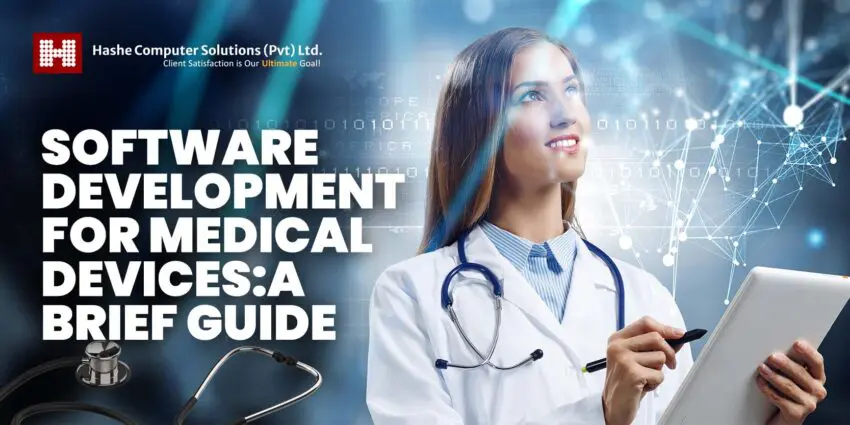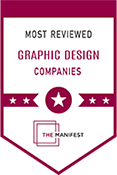
Healthcare technology has made significant strides over the last decade, ushering in a new era where medical device software is pivotal. From diagnostic tools to therapy monitoring, medical device software is a crucial component that enhances the performance of medical devices, whether linked to existing systems or functioning independently.
Simply put, medical device software is a necessary component that determines the performance of medical devices, whether they are linked to an existing system or function independently.
Technology and medical devices have collaborated to transform the design and execution of healthcare solutions. The software readily integrates with medical equipment, outperforming traditional components. More dynamic and flexible solutions have been produced due to this integration, encouraging creative and patient-centered methods in the medical field.
Modern healthcare equipment has evolved along these technological lines, becoming more compact, portable, and accessible outside clinical settings—even in patients’ homes. Remarkably, even these compact medical devices show excellent dependability and effectiveness and can significantly impact basic healthcare procedures.
In this blog, you will learn about the benefits of medical device software, the factors to consider for developing such software, and the steps involved in medical device software development. So, let’s get into the details without any further ado!
What is Medical Device Software (MDSW)?
Medical device software (MDSW) is a stand-alone program that performs medical functions independent of hardware devices. It is essential to healthcare and encompasses several aspects, like patient monitoring, treatment, and diagnosis.
MDSW is becoming exceedingly crucial in contemporary healthcare. It is used in various medical devices, such as imaging systems, surgical robots, insulin pumps, and pacemakers. It can aid in improving the quality, safety, and effectiveness of medical care by:
- Giving real-time feedback to medical practitioners immediate
- Automating tasks and lowering the chance of human mistake
- enabling more individualized and focused medical interventions
- Increasing the affordability and accessibility of medical care
One noteworthy example of software for a medical device is a heart rate monitor. It collects and analyzes the user’s heart rate data via a wearable health device. After processing the data, this software displays it in a user-friendly interface.
Medical device software development involves producing software specifically designed for medical applications. This procedure entails creating, testing, and implementing software that satisfies stringent legal requirements for efficacy and safety.
Software development for medical devices requires a combination of medical knowledge and technology innovation. It entails rigorous adherence to quality standards and regulatory compliances. The aim is to develop trustworthy, accurate, and user-friendly software to assist healthcare providers in providing better care.
Types of Medical Device Software
Two types of medical device software are available worldwide: embedded medical systems and Software as a Medical Device (SaMD). Both categories play critical roles in modern healthcare.
Embedded Medical Systems
The embedded medical system software (EMSSW) is a form of software embedded in a medical device and controls its operation. Typically, EMSSW is made to adhere to tight safety regulations and be highly dependable. It is utilized in numerous medical devices, such as imaging systems, surgical robots, insulin pumps, and pacemakers. They are generally ’embedded’ in the hardware rather than being a standalone software. Furthermore, they are inextricably linked to the apparatus and support its main functionality.
Software as Medical Device (SaMD)
All programs that do not require specialized medical equipment fall under the Software as a Medical Device (SaMD) category. Unlike embedded systems, SaMD runs independently on any medical hardware. It is standalone software with a particular focus on medicine. SaMDs can be desktop programs, cloud-based programs, or mobile apps with a medical focus. Such software can be implemented into embedded systems and medical devices.
The Advantages of Medical Device Software Development for Healthcare Businesses
Medical device software guarantees improved safety and precision in the provision of healthcare services in addition to increased operational efficiency. Let’s examine the advantages of developing software for medical devices.
Streamlined Workflow
Integrating technological solutions allows healthcare businesses to improve operational workflows, reduce paperwork, increase productivity, and automate repetitive tasks. This shift enables medical practitioners to shift their attention from administrative responsibilities to a patient-centered approach.
Regulatory Compliance
Medical Device Software (MDS) development ensures compliance by closely following industry rules, reducing the chance of penalties, and highly prioritizing patient safety within the healthcare system. During the medical software development process, you should take into account the following regional healthcare regulatory compliances:
- United States (US): HIPAA, FDA, HITECH
- European Union (EU): MDR, GDPR, EMA
- Canada: CMDR, PIPEDA
- Australia: Data Protection Act, MHRA
- Japan: PMDA
- China: NMPA
- India: CDSCO
- Brazil: ANVISA
- International Compliances: ISO and IMDRF
Enhances Accessibility and Affordability
MDS development broadens healthcare services outside traditional clinical settings, increasing accessibility and affordability for patients seeking medical care.
Improved Patient Care
Medical Device Software (MDS) facilitates more accurate diagnosis, sophisticated monitoring, and customized treatment regimens, significantly improving patient care. Its adoption substantially contributes to the efficient and effective delivery of healthcare.
Technological Incorporation
Modern technologies like artificial intelligence (AI), the Internet of Things (IoT), and cloud computing improve the functionality and performance of medical equipment, leading to improved healthcare solutions that provide better patient care. By optimizing treatment precision and diagnostic accuracy, this integration transforms healthcare delivery.
Data Analysis and Accuracy
Software as a Medical Device development ensures accurate data gathering and complex analysis, enabling medical professionals to draw meaningful findings and make well-informed decisions.
Competitive Edge
Companies that make MDS development investments have a competitive advantage in the fast-paced healthcare sector. Through cutting-edge medical software, these businesses provide cutting-edge services and solutions that differentiate them from rivals while strengthening their brand’s position in the market.
Factors to Consider When Developing Medical Device Software
Software development for medical devices involves several crucial elements that require careful thought and strategic planning. Businesses can develop secure and efficient software that complies with regulations by carefully taking into account each of these aspects.
Compliance With Regulations
It is essential to follow strict regulations, such as those set forth by the FDA. Adherence to these criteria ensures that medical device software is safe, effective, and high quality. Additionally, regulatory compliance is vital to ensure patient safety by traversing complex legal and quality requirements, as well as to meet the standards for market clearance.
Data Privacy and Security
Implementing robust data security measures, such as encryption and access controls, is critical. Complying with data protection standards such as HIPAA and maintaining patient confidence require safeguarding sensitive patient information from breaches or unauthorized access.
User Experience and Usability
It is crucial to develop medical device software with the user in mind to ensure that it is easy to use and intuitive for both patients and healthcare providers. In addition to increasing productivity and reducing errors, a well-designed interface promotes fluid communication between users and the program. In the end, this leads to higher levels of user satisfaction and better patient care.
Compatibility with Medical Systems
It is essential to develop software that connects and communicates with other devices in the healthcare ecosystem effortlessly. This interoperability allows seamless data sharing across several systems, leading to better patient outcomes and more effective healthcare delivery.
Risk Management
Comprehensive risk assessment methods are required to identify potential hazards and manage risks associated with the software. It ensures patient safety and reduces possible harm by including thorough risk assessment, management, and mitigation measures.
Collaboration with Stakeholders
It is essential to involve stakeholders to guarantee that the software satisfies specific needs, including patients, healthcare providers, and regulatory agencies. That contributes to improving its usefulness and applicability in actual healthcare environments. This collaboration further ensures that the program complies with user and legal requirements.
Testing and Validation
Ensuring the program is error-free, operates reliably, and fulfills quality standards requires thorough testing and validation procedures. Before the software is made available for actual usage, these processes find and fix any possible problems or flaws, guaranteeing the software’s effectiveness and performance.
Ongoing Maintenance and Improvement
Putting continuous improvement ideas into practice is crucial to maintaining software updates and keeping it in line with changing healthcare needs. Regular upgrades are also essential for maintaining high performance and safety requirements and addressing new difficulties.
How to Develop Custom Medical Device Software?
Custom medical device software development requires essential procedures to assure compliance, precision, and operational excellence. Let’s look at the development of custom medical device software in detail.
Know Your Regulatory Requirement
Before starting the medical device software development process, it is crucial to have a thorough understanding of the complex regulatory standards, such as those set by the FDA, HIPAA, and other local regulatory agencies. These specifications are essential for ensuring the efficacy, safety, and quality of software used in medical devices.
Adherence to these laws is essential to secure market acceptance and guarantee patient safety. Understanding these standards will influence the software’s scope, features, and safety procedures across the whole life cycle of developing medical devices.
Market Research and User Clarification
Comprehensive market research is necessary for the development of medical device apps that are both efficient and user-friendly. It aids in obtaining a thorough grasp of the state of healthcare, market trends, and user requirements and pinpointing precise user needs and preferences.
Determining the software’s features, functionality, and design requires these insights. By customizing the final product to the users’ demands, we can ensure it is more effective and user-friendly.
Look for an Experienced IT Firm.
Working with a bespoke medical software development company with a solid reputation and vast experience creating medical software is essential. A track record of compliance with regulatory obligations is also crucial.
In addition to helping with software development, a reputable medical software development firm like Hashe can offer insightful advice and helpful insights. They will guarantee compliance, reliable software, and creative solutions.
Planning Stage with your Hired IT Firm
It is time to work on project planning with the IT firm you hired. It includes planning the strategy, creating benchmarks, and specifying the parameters of the project.
Setting the foundation, outlining objectives, and coordinating the development process with precise deadlines and targets are all accomplished at this crucial stage of the software development process for medical devices. Efficient planning guarantees that the project proceeds as intended, reduces setbacks, and achieves its goals.
Development and Integration
The software development process for medical devices starts following the completion of the required preparations. During this phase, it is crucial to prioritize quality, accuracy, and regulatory compliance. The software must also seamlessly integrate with the healthcare environment to enable data sharing between various systems.
Implementation and Monitoring
After completing the software, it will be integrated into the healthcare setting. Careful monitoring and performance evaluation of the program are essential throughout this medical device software development stage. Continuous monitoring during the medical device app development process is critical for spotting any flaws or areas that require improvement, ensuring that the software operates efficiently and effectively.
Support and Maintenance
Post-implementation, continuous support, and maintenance are critical for ensuring the software’s security, reliability, and optimal performance in the healthcare setting. This stage of the medical device software development life cycle entails resolving difficulties, implementing updates or patches, and keeping the software up-to-date and compliant. Ongoing support and maintenance ensure that Medical Device Software continues to function properly.
Conclusion
Software development for medical device systems has numerous benefits for healthcare businesses. However, one should consider some factors when developing medical device software, including regulatory compliance, data privacy and security, usability, interoperability with medical systems, and risk management.
Software development for medical device systems is a challenging but worthwhile endeavor. Developers can ensure that their ultimate product fulfills all legal compliance standards by utilizing regulatory guidelines, access to specialized knowledge, and prepackaged software solutions.
However, it is always preferable to collaborate with an experienced team that understands the legislation and supporting technology, as Hashe does. Hashe’s professionals have vast experience in software development for this industry, so we can foresee potential issues throughout production and provide bespoke solutions adapted to any situation. Contact us today!
Are you looking for the best IT providers for your IT projects? Look no further than Hashe! Hashe Computer Solutions is a leading IT solutions provider that offers world-class software, mobile application, web development, and digital marketing services. Contact us for the best web design solutions!
Keep following us for more tech news!
Check out our Social Media Pages:
- Facebook: https://www.facebook.com/hasheCS/
- Instagram: @hashe_official
- LinkedIn: https://pk.linkedin.com/company/hashe-computer-solutions
- Twitter: https://twitter.com/hashe
- Youtube: https://www.youtube.com/channel/UCay7eQtwoQ3ehoIesAxHDPw
- Pinterest: https://www.pinterest.com/hashecs/
- Threads: https://www.threads.net/@hashe_official
- Behance: https://www.behance.net/hashecs
Was this helpful?
Last Modified: June 24, 2024 at 11:48 am
83 views











